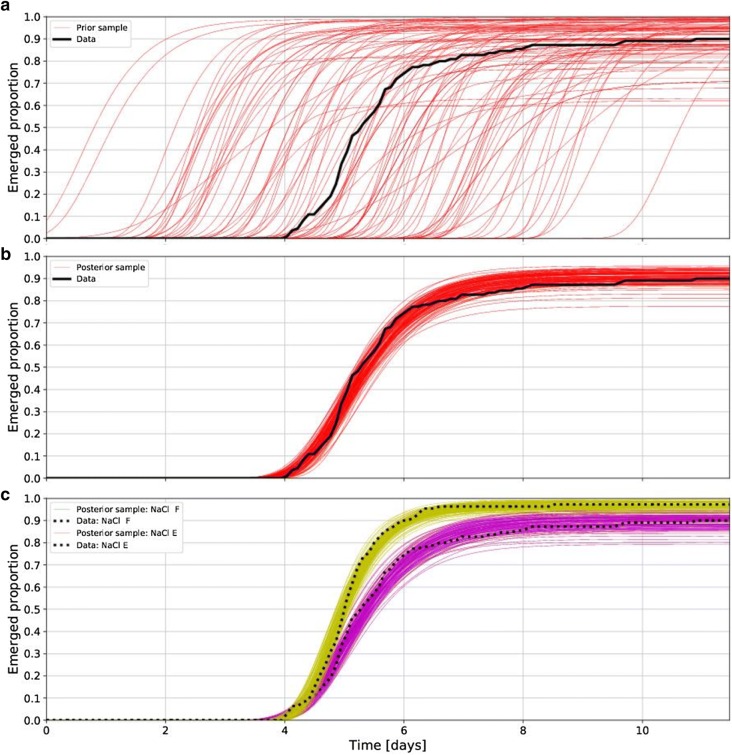Plants, like all dwelling organisms, metamorphose their our bodies throughout their lifetime. All the developmental and development occasions in a plant’s life are linked to particular factors in time, be it seed germination, seedling emergence, the looks of the primary leaf, heading, flowering, fruit ripening, wilting, or loss of life.
The onset of automated phenotyping strategies has introduced an explosion of such time-to-event data. Unfortunately, it has not been matched by an explosion of ample data analysis strategies.In this paper, we introduce the Bayesian approach in direction of time-to-event data in plant biology.
As a mannequin instance, we use seedling emergence data of maize beneath management and stress situations however the Bayesian approach is appropriate for any time-to-event data (see the examples above).
In the proposed framework, we’re in a position to reply key questions relating to plant emergence comparable to these: (1) Do seedlings handled with compound A emerge sooner than the management seedlings? (2) What is the chance of compound A growing seedling emergence by a minimum of 5 %?Proper data analysis is a elementary job of common curiosity in life sciences.
Here, we current a novel methodology for the analysis of time-to-event data which is relevant to many plant developmental parameters measured in area or in laboratory situations. In distinction to current and classical approaches, our Bayesian computational methodology correctly handles uncertainty in time-to-event data and it’s succesful to reliably reply questions which are troublesome to handle by classical strategies.

Practical purposes of metabolomics in plant biology.
The applied sciences being developed for the large-scale, basically unbiased analysis of the small molecules current in natural extracts produced from plant supplies are significantly altering our approach of enthusiastic about what is feasible in plant biology.
A variety of totally different separation and detection strategies are being refined and expanded and their mixture with superior data administration and data analysis approaches is already giving plant scientists far deeper insights into the complexity of plant metabolism and plant metabolic composition than was conceivable just some years in the past.
This area of “metabolomics”, whereas nonetheless in its infancy, has nonetheless already been welcomed with open arms by the plant science group, partly as a result of of these stated benefits but additionally as a result of of the broad potential applicability of the approaches in each elementary and utilized science.
The variety in utility already ranges from understanding the appreciable complexity of major metabolic networks in Arabidopsis, to the adjustments which happen in the biochemical composition of meals occurring, for instance, through the Pasteurization of tomato purée for long-term storage or the boiling of Basmati rice for direct consumption. The insights being gained are revealing precious data on the strict management but versatile nature of plant metabolic networks in many alternative programs.
This quantity goals to provide a complete overview of the approaches accessible for the efficiency of a “typical” plant metabolomics experiment, the selection of analytical strategies and to supply warnings on the potential pitfalls in experimental design and execution.
